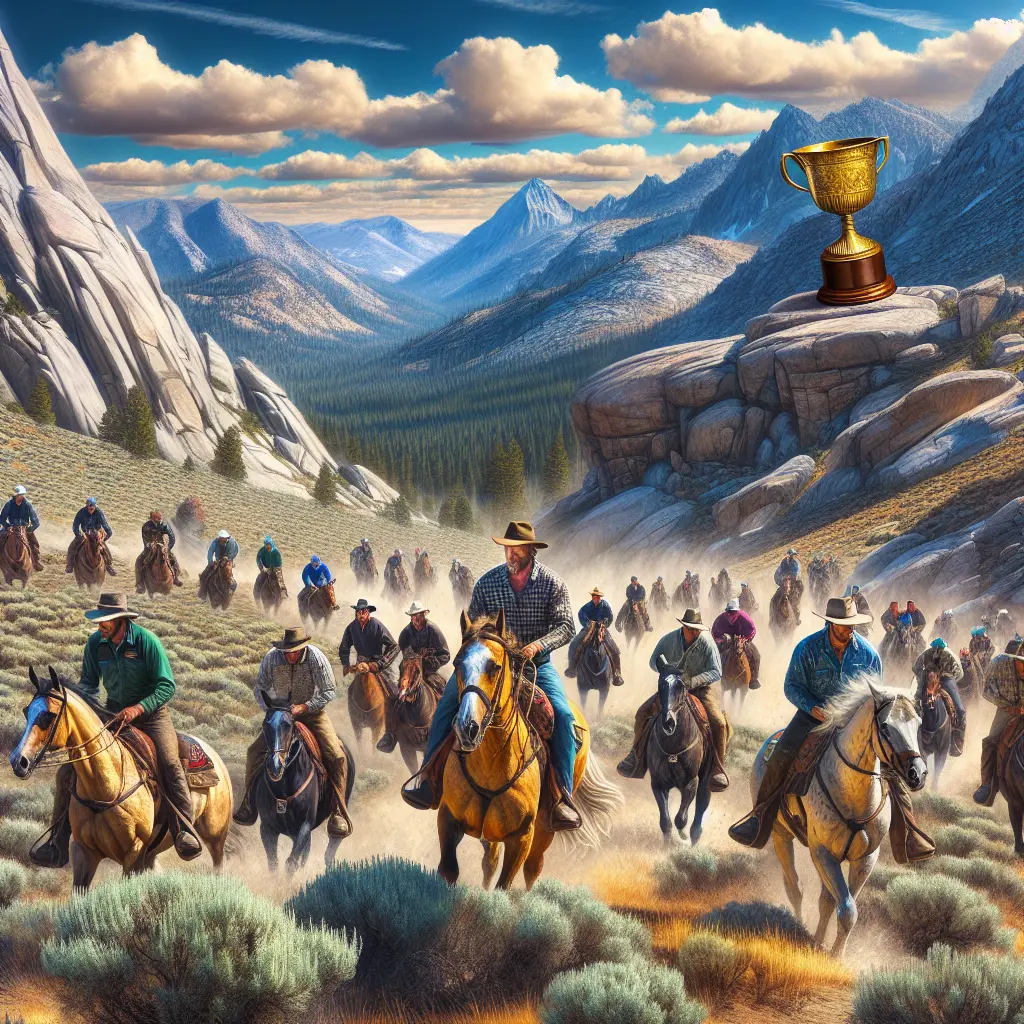Introduction
Welcome to the captivating world of the Tevis Cup, a grand test of endurance and ethical consideration in the realm of equestrian events. Derived from a fascinating blend of history and contemporary equestrian practices, the Tevis Cup offers a unique spectacle of human and horse partnership. In this blog, we will explore the depths of the Tevis Cup, including its history, the ethical considerations surrounding horse welfare, and the rigorous endurance challenges faced by participants.
Background and History
Since its inception in 1955, the Tevis Cup has become a pinnacle of endurance riding. Starting near Truckee and ending in Auburn, the course spans 100 miles through the Sierra Nevada mountains, boasting a harmonious balance of beauty and challenging terrain. Riders and horses alike are tasked with traversing this natural obstacle course, embracing both strategy and stamina to complete the ride.

Ethics: Prioritizing Horse Welfare
In the high-stakes world of the Tevis Cup, the welfare of horses is paramount. The event incorporates rigorous veterinary checks to ensure each horse's fitness before, during, and after the race. These checks include assessments for lameness, dehydration, and other metabolic issues. Participants understand that a horse's health comes first; veterinarians vigilantly monitor animals and withdraw them from the race if necessary. With only 40% to 54% typically completing the race, the high dropout rate underscores the ethical stance of prioritizing animal safety over competition [source].
Veterinary Checks Ensure Safety
The race's regulations require horses to undergo a series of checks, including heart rate recovery assessments, to preclude any health threats. This procedure not only safeguards horses but also reinforces the ethical commitment riders and organizers have towards their equestrian partners. The commitment to welfare distinguishes the Tevis Cup from other competitive events.
Endurance: The Challenge of the Trail
The Tevis Cup trail traverses the historic Western States Trail, adorned with narrow mountain trails, daunting inclines, and obstacles like the notable Cougar Rock. Riders face not just the test of perseverance but also the need to strategize and implement effective horse management. Success in this enduring competition hinges on both horse and rider's capability to harmoniously tackle the trials lying within the natural confines of the trail [source].

Requirements for Participation
To participate in the Tevis Cup, horses must have completed at least 300 miles in sanctioned events and be at least six years of age. Riders often favor Arabian horses, known for their endurance capabilities, and many lease specially trained horses for the event. The grueling prerequisites for entry, coupled with personal determination, symbiotically prepare participants for the physical and mental demands of the Tevis Cup [source].
Facts and Figures
- Completion Rate: Historically, about 54% of starters complete the race.
- Record Time: Boyd Zontelli set the record for the fastest winning time at 10 hours and 46 minutes in 1981.
- Repeat Winners: Donna Fitzgerald holds the record for the most wins with one horse, Witezarif, winning six times [source].
Training and Preparation
Preparing for the Tevis Cup is a saga of meticulous training and bonding between horse and rider. Horses demand extensive conditioning over years to develop the necessary stamina and resilience, while riders must cultivate both physical fitness and mental fortitude. The weight of preparation equally challenges participants on an emotional level—reflecting an admiration and respect towards their equine partners.

Bonding and Strategy
The synergy between horse and rider plays a crucial role in achieving success. Their partnership revolves around mutual trust during challenging situations, which can neither be rushed nor underestimated. The Tevis Cup emphasizes the ethos that success stems from embracing the journey rather than the final outcome.
Role of Equipment
Ensuring the right stable rugs, turnout rugs, and fly protection is vital for a horse's comfort and safety. These items are not merely accessories, but essentials that enhance the overall race experience for both horse and rider.
Conclusion
The enduring spirit of the Tevis Cup captures the timeless connection between horse and rider forged through adversity and preparation. It serves as a tribute to both individual resilience and collective respect for animal welfare. As participants engage in this celebrated event, they honor not only their equine partners but also their unwavering determination to conquer one of the most formidable endurance races in the world. The Tevis Cup is a testament to the harmonious partnership between humans, horses, and nature.



